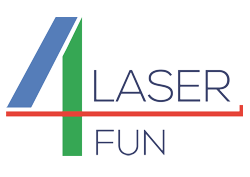The Laser4Fun Newsletter (issue September 2017) is out! To download it, click on the link below. Questions? Contact us through the contact form.
ESRs and supervisors at EUROMAT2017 conference
EUROMAT is the premier international congress in the field of materials in Europe, and is organised by the the Federation of European Materials Societies (FEMS). The EUROMAT2017 congress was held in Thessaloniki, Greece, from 17 – 22 September, 2017.
Prof. Andrés-Fabián Lasagni and prof. Gert-willem Römer, both supervisors in the Laser4Fun project, co-organized with prof. Rob Eason (University of
Southampton, UK) and prof. Ioanna Zergioti (National Technical University of Athens, Greece) a Symposium on “Laser-based processing and manufacturing” at this conference. At this symposium, some results of the Laser4Fun project were presented by prof. Antonio Ancona, Tobias Stark and Alfredo Aguilar.
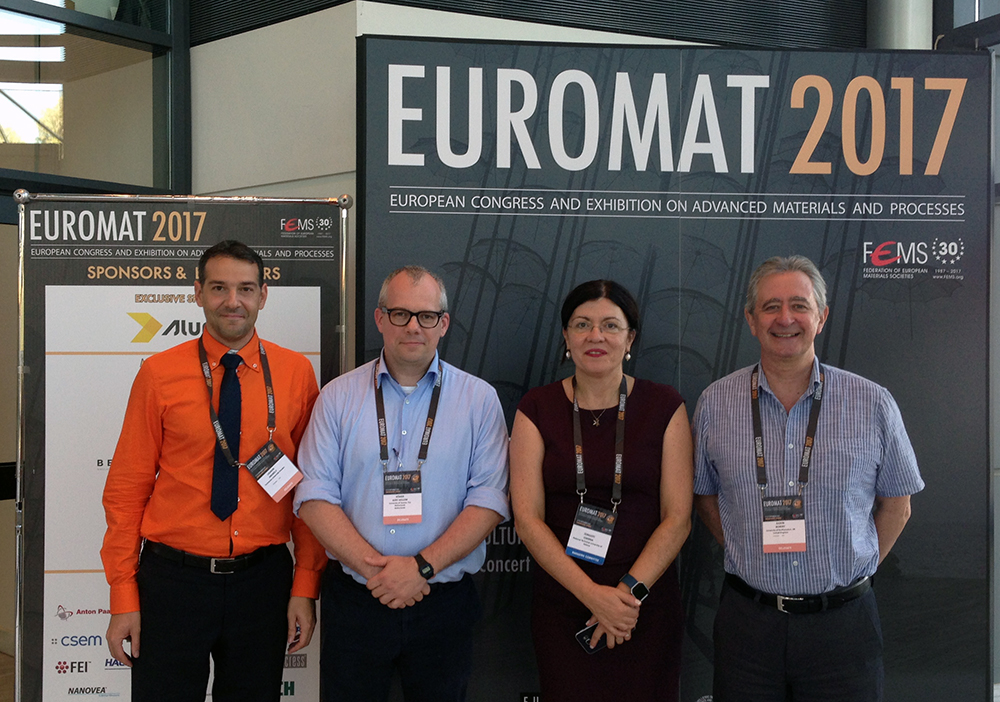
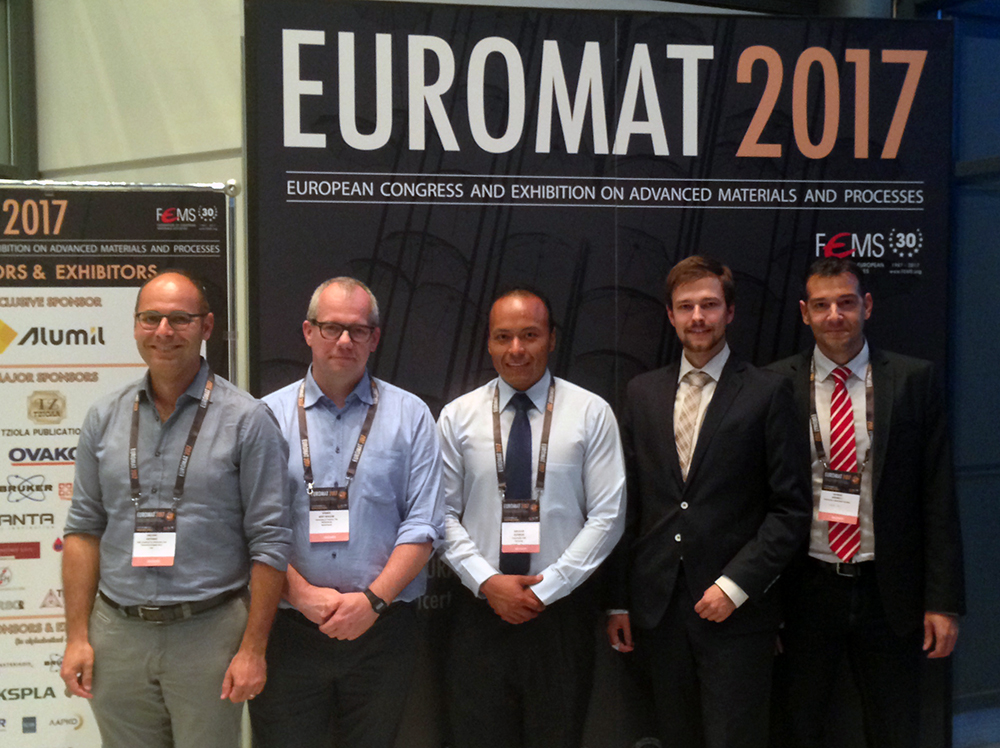
Prof. Andrés-Fabián Lasagni wins the FEMS Materials Science and Technology Prize 2017
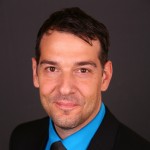 Today, during the EUROMAT2017 conference, prof. Andrés-Fabián Lasagni, one of the leading scientists in the Laser4Fun project was awarded, by the Federation of European Materials Societies (FEMS), the Materials Science and Technology Prize 2017.
Today, during the EUROMAT2017 conference, prof. Andrés-Fabián Lasagni, one of the leading scientists in the Laser4Fun project was awarded, by the Federation of European Materials Societies (FEMS), the Materials Science and Technology Prize 2017.
Vacancy: Early Stage Researcher (ESR) position
One Early Stage Researcher (ESR) position is available from September 2017 to work in the framework of the Laser4Fun project. This job opening covers research position in the frame of a PhD doctoral programme, aiming at a PhD degree awarded by the University of Zaragoza (Spain). The ESRs will undertake research focused on the characterization of antibiofilm properties in samples provided by other partners in the consortium of the project. For more information, consult the vacancies page of this website.
Summer School on Advanced Laser Processing 2017
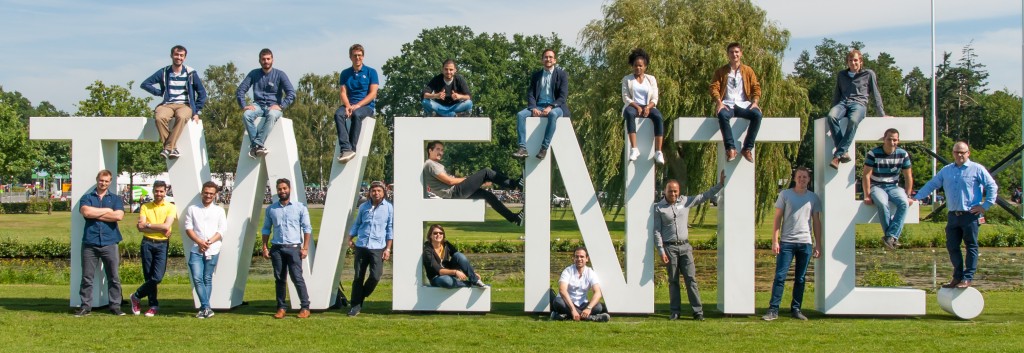
In total 22 persons attended and contributed to the 1st international Summer School & 2nd Laser4Fun Summer School on Advanced Laser Processing. From August 21st to 25th, the participants were “fully-immersed” into the world of advanced laser materials processing. Lectures and presentations by academic experts, specialists from industry, as well as of the participants alternated, with ample time for discussions. The summer school also included practical exercises and workshops in state-of-the-art laser-laboratories.
Topics included, but were not limited to:
- Fundamentals of laser-material interaction
- Pulsed laser surface ablation
- Pulsed laser processing of bulk materials
- Laser-induced Periodic Surface Structures (LIPSS)
- Micro/nano structuring
- New trends in laser processing
- Laser cladding
- Laser-induced Forward Transfer (LIFT)
- Applications of laser processing
- Training on generic research relevant skills
The Summer School was organised and hosted by the Chair of Laser Processing at the University of Twente in the Netherlands.
Influence of ambient conditions on the evolution of wettability properties of an IR-, ns-laser textured aluminium alloy
Results of the work in the Laser4Fun project has been published as:
J. T. Cardoso, A. Garcia-Girón, J. M. Romano, D. Huerta-Murillo, R. Jagdheesh, M. Walker, S. S. Dimov and J. L. Ocaña Influence of ambient conditions on the evolution of wettability properties of an IR-, ns-laser textured aluminium alloy. RSC Advances, 63, 2017
Abstract
Micro cell structures of different sizes were patterned using a nanosecond near-infrared laser source on Al2024 aluminium alloy plates with 2 mm thickness. The influence of laser parameters on the shape and size of the produced patterns were studied together with the evolution of wettability properties over time for different storage conditions. Samples were found to be superhydrophobic from a single step laser patterning, requiring no further treatment. Exposure to ambient air was shown to be a key factor in the property changes of the samples over time. The produced surface patterns with different laser parameter settings were correlated with the contact angle measurements, revealing a great influence of the amount of recast material on the hydrophobic properties. X-Ray photoelectron spectroscopy was used to study the impact of surface chemistry changes on hydrophobicity, analysis of elemental composition proved that chemisorbed organic molecules present in the ambient air were responsible for the hydrophilic to superhydrophobic transition.
Link(s)
Texturing metal surface with MHz ultra-short laser pulses
Results of the work in the Laser4Fun project has been published as:
Fotis Fraggelakis, Girolamo Mincuzzi, John Lopez, Inka Manek-Hönninger, and Rainer Kling. Texturing metal surface with MHz ultra-short laser pulses. Optics Express 25(15), pp. 18131-18139, 2017
Abstract
We show, for the first time to our knowledge, the role the heat accumulation plays on the evolution of ultra-short pulse laser-induced surface structures morphology when varying fluence, the number of scans and the repetition rate from 100 kHz up to 2 MHz. We demonstrate how to tailor the size of micro-spikes from nearly ten microns to several tens of microns by a systematic variation of both fluence and overlap. We believe our results will contribute to an in deep understanding of the mechanisms underlying laser surface structuration at high repetition rates.
Link(s)
Controlling laser-induced features morphology on stainless steel surfaces using high average power femtosecond laser
Results of the work in the Laser4Fun project has been published as:
F. Fraggelakis, G. Mincuzzi, J. Lopez, I. Manek-Hönninger and R. Kling, “Controlling laser-induced features morphology on stainless steel surfaces using high average power femtosecond laser,” 2017 Conference on Lasers and Electro-Optics Europe & European Quantum Electronics Conference (CLEO/Europe-EQEC), Munich, 2017, pp. 1-1.
Abstract
Ultra-short pulse (USP) Laser Induced Periodic Surface Structures (LIPSS) namely ripples, micro-grooves and spikes [1] have received considerable attention since they can modify some key surface properties like wettability, colour and tribology, increasing the material’s internal value [2]. Nevertheless, the complete understanding of the physical mechanisms leading to LIPSS formation is still under debate. Even so, at repetition rate values as high as several kHz, the fluence Φ and the overall energy irradiated over a unit surface (dose) have been identified as the physical parameters playing a major role in the structures generation process [3][4][5].
However, for a fixed Φ value, in correspondence of repetition rate as high as few MHz, the same dose value could enable the creation of surface structures having different morphologies depending on the process strategy. In fact, the latter, i.e. the combination of pulses overlap and number of scans corresponding to a given dose value has a huge bearing to determine the heat accumulated during the process which in turn will determine the final structure morphology.[6]
Here, for the first time, we report a systematic study on the influence of a comprehensive set of process parameters like Φ, pulses overlap, number of scans and cumulative dose on the induced structure over stainless steel surface for two different wavelengths and high repetition rate. An industrial USP laser (τp< 350 fs) of high power (up to 20 W) operating at a repetition rate up to 1 MHz, emitting in the near infrared at λ = 1030 nm and at λ=515 nm by second harmonic generation was used to carry out the experiment. By comparing the results for two different repetition rates (100 kHz and 1 MHz), we aim to push more in deep the understanding of the physical mechanism that leads to spike creation by verifying the role of the inter-pulse delay in heat accumulation.
For both wavelengths, we demonstrate the transition from ripples to conical formation underlining the presence of groove formation as an intermediate step. Interestingly, for the first time, we demonstrate the possibility to finely tune the feature size in the case of 1 MHz. In fact, by varying the fluence between 0.22 J/cm2 and 0.65 J/cm2 feature sizes comprised between 8.3 μm ± 3 μm and 36 μm ± 10 μm.
Finally, by comparing the results obtained with several Φ values we propose an effective strategy not only to overcome the heat accumulation issue in the formation of the structures, but also for scaling up the process.
References
[1] H. M. Van Driel, J. E. Sipe, and J. F. Young, “Laser-induced periodic surface structure on solids: A universal phenomenon,” Phys. Rev. Lett., vol. 49, no. 26, pp. 1955–1958, 1982.
[2] A. Y. Vorobyev and C. L. Guo, “Optical and Wetting Properties of Femtosecond Laser Nanostructured Materials,” J. Nano Res., vol. 14, pp. 57–67, 2011.
[3] G. Mincuzzi, L. Gemini, M. Faucon, and R. Kling, “Extending ultra-short pulse laser texturing over large area,” Appl. Surf. Sci., vol. 386, pp. 65–71, 2016.
[4] M. Faucon, A. Laffitte, J. Lopez, and R. Kling, “Surface blackening by laser texturing with high repetition rate femtosecond laser up to 1MHz,” Proc. SPIE, vol. 8972, no. February, p. 89721M, 2014.
[5] O. Varlamova, M. Bounhalli, and J. Reif, “Influence of irradiation dose on laser-induced surface nanostructures on silicon,” Appl. Surf. Sci., vol. 278, pp. 62–66, 2013.
[6] D.-H. Kam, J. Kim, L. Song, and J. Mazumder, “Formation mechanism of micro-spikes on AISI 4340 steel with femtosecond laser pulses at near-threshold fluence,” J. Micromechanics Microengineering, vol. 25, no. 4, p. 045007, 2015.
Link(s)
Fabrication of multi-scale periodic surface structures on Ti-6Al-4V by direct laser writing and direct laser interference patterning for modified wettability applications
Results of the work in the Laser4Fun project has been published as:
D. Huerta-Murillo, A.I. Aguilar-Morales, S. Alamri, J.T. Cardoso, R. Jagdheesh, A.F. Lasagni and J.L. Ocaña. Fabrication of multi-scale periodic surface structures on Ti-6Al-4V by direct laser writing and direct laser interference patterning for modified wettability applications. Optics and Lasers in Engineering, 98, 2017.
Abstract
In this work, hierarchical surface patterns fabricated on Ti-6Al-4V alloy combining two laser micro-machining techniques are presented. The used technologies are based on nanosecond Direct Laser Writing and picosecond Direct Laser Interference Patterning. Squared shape micro-cells with different hatch distances were produced by Direct Laser Writing with depths values in the micro-scale, forming a well-defined closed packet. Subsequently, cross-like periodic patterns were fabricated by means of Direct Laser Interference Patterning using a two-beam configuration, generating a dual-scale periodic surface structure in both micro- and nano-scale due to the formation of Laser-Induced Periodic Surface Structure after the picosecond process. As a result a triple hierarchical periodic surface structure was generated. The surface morphology of the irradiated area was characterized with scanning electron microscopy and confocal microscopy. Additionally, static contact angle measurements were made to analyze the wettability behavior of the structures, showing a hydrophobic behavior for the hierarchical structures.
Link(s)
Announcement: Summer school 2017
From August 21st to 25th 2017, the Chair of Laser Processing of the University of Twente organizes its 1st international summer school on “Advanced laser processing”. This event will be venue for the second Laser4Fun summerschool and it aims to give the participants a “full-immersion” experience in the world of laser materials processing.
For the preliminary program, topics, and instructions on how to register, download the PDF leaflet.
